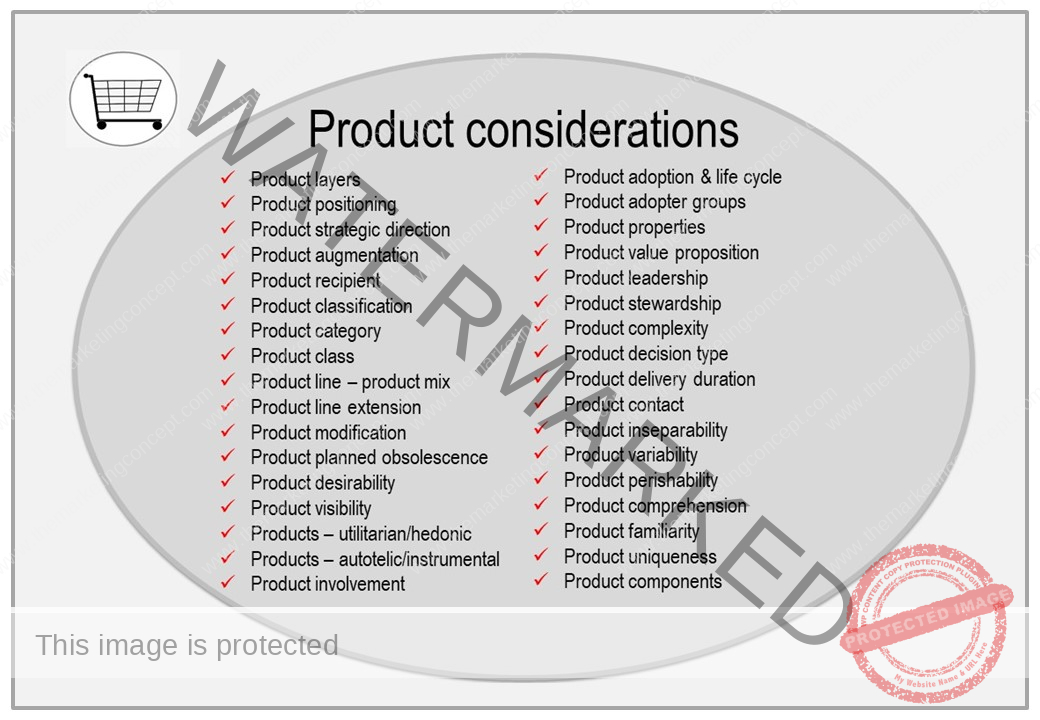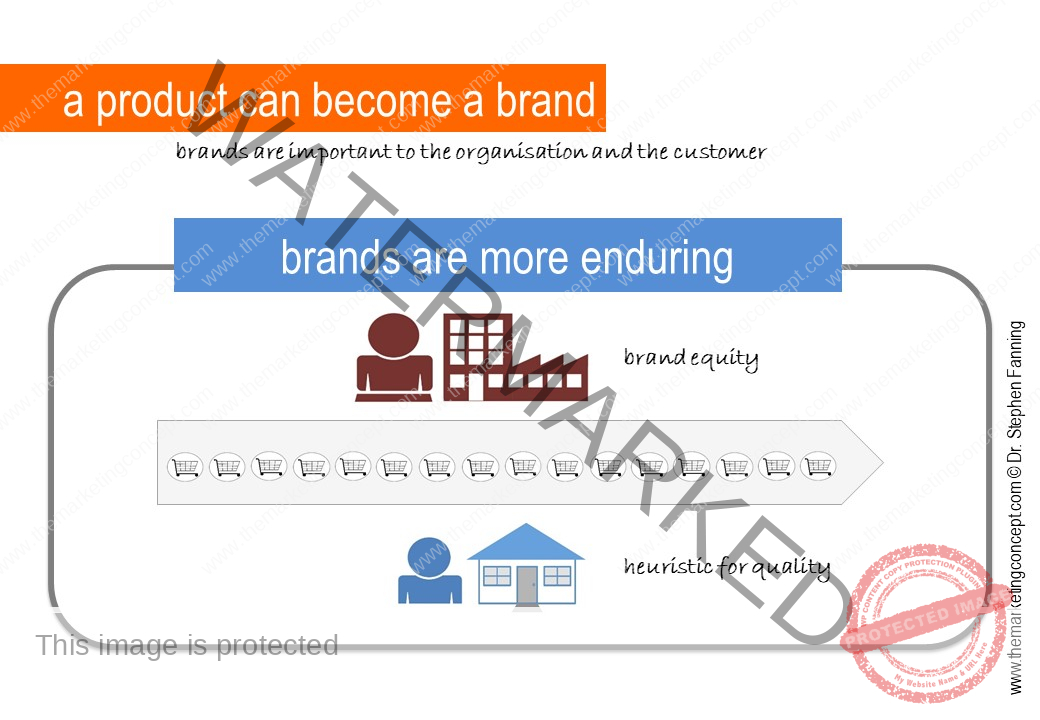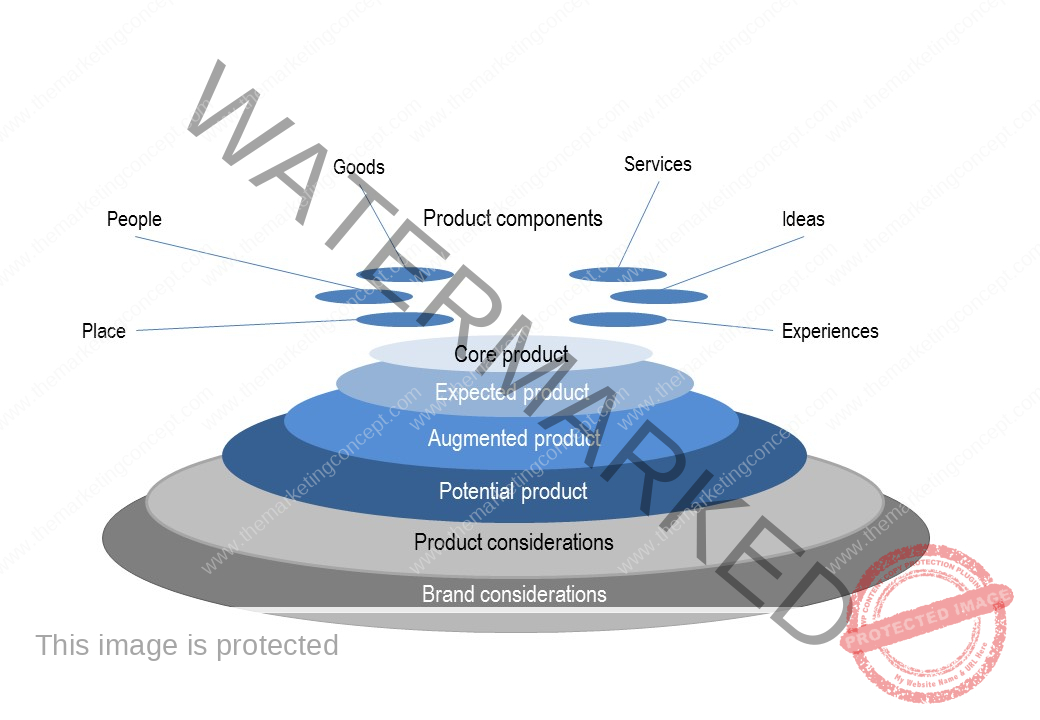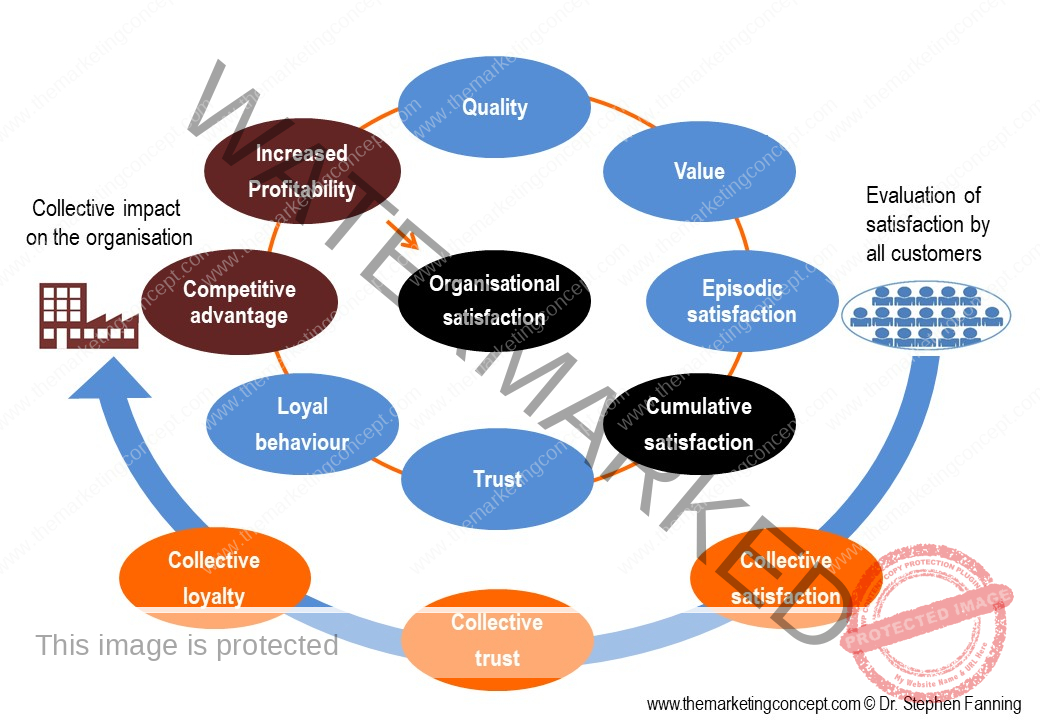2:3:3 branding [UPVP]
Learning objectives of the chapter: After completion of this chapter students should be able to demonstrate how the marketing concept, a marketing philosophy and the marketing communication process are directed towards creating a brand and a unique product value proposition.

The product considerations that marketing practitioners ‘consider’ when managing a product and over time create a brand in the collective consumers’ minds.

Over time communication from consumers, customers, and the organisation will create a brand, note that the brand will have both negative and positive qualities.

You may recall when we were discussing the total product and, in particular, product considerations we mentioned that products are built on a foundation layer of brand considerations

When we discuss the circle of satisfaction, we can see one customer’s experience. However, when we consider the collective effect of all customers we see the collective impact on the organisation – which is generally referred to as ‘brand equity’.
Directions: After listing the brand considerations we discussed in the total product [ideas component], we then discuss, in an holistic sense, how brands are more than one way marketing communication, how they form in the collective minds of consumers, how marketing practitioners employ theory to form a brand, and the role of branding in meeting the marketing objectives [long and short term].
In this chapter we look at the important topic of branding, this provides an overview; in section 3 we explore marketing communications as marketing action plans [MAP].
- Internal and channel marketing
- Customer retention
- External communication
Generally, when non-marketing people use the term ‘marketing’ they are referring to what marketing practitioners call ‘external communication’ and tend to overlook how quality external communication is the result of a rigorous internal communication process. External marketing is marketing by an organisation to external customers [B2B and/or B2C]. External communication is an important component of an organisation’s marketing strategy. The three marketing [communications] objectives – attract new customers, retain existing customers, and enhance the relationships with existing customers can only be achieved through the successful implementation of a well-crafted external communication strategy.
The perception that marketing is external communication is deeply ingrained – consequently, it would be natural for readers to think that we would begin the communication module with an overview of the ‘external’ communication mix model. However, if you have considered this more deeply you may have recognised that beginning with external communication would not be in keeping with the marketing concept, in fact it would be more in keeping with the selling concept.
Therefore, the e-book begins communication marketing action plans with internal and channel marketing. Previously, we introduced three strategic objectives – product leadership, operational excellence, and customer intimacy. Clearly, all three are only possible through quality internal and channel communication. Internal marketing is marketing within an organisation; channel marketing is marketing to the channel partners [partners who provide initial services, enabling services, and peripheral services that add value to the product and benefit the customer and the organisation].

